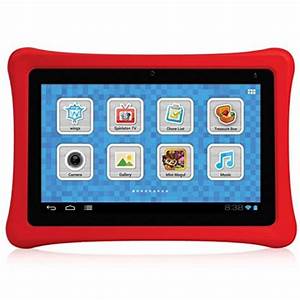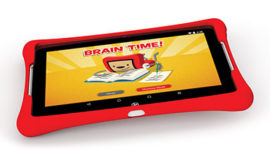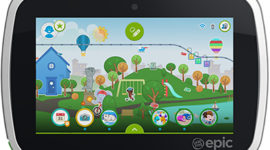Tablet Comparison: nabi 2S v LeapPad Ultra
 The nabi 2S is a 7″ Android tablet designed for children whilst the LeapPad Ultra, although it is also a 7″ tablet, is an educational tablet designed from the ground up to be suitable for children. The nabi 2S has a protective bumper to help protect the tablet from damage, whilst the Ultra has been built specifically for children. The nabi 2S has a 1280×800 pixel resolution touchscreen, whilst the resolution of the Ultra is only 1024×600.
The nabi 2S is a 7″ Android tablet designed for children whilst the LeapPad Ultra, although it is also a 7″ tablet, is an educational tablet designed from the ground up to be suitable for children. The nabi 2S has a protective bumper to help protect the tablet from damage, whilst the Ultra has been built specifically for children. The nabi 2S has a 1280×800 pixel resolution touchscreen, whilst the resolution of the Ultra is only 1024×600.
The nabi 2S is an Android tablet, with access to the Android app ecosystem, that runs Android 4.2 Jelly Bean. The Ultra, however, runs LeapFrog’s own operating system, and only has access to those apps designed specifically for the tablet and available in the LeapPad store, although it also has a cartridge slot allowing the use of suitable LeapFrog cartridges.
The nabi 2S has stereo speakers, whilst the LeapPad only has one. Both have a microphone and a 3.5mm headphone jack. The Ultra has two cameras, both of 2.0 megapixel (MP) resolution, one front-facing and one rear, whilst the 2S only has a front-facing camera, again with 2.0 MP resolution.
The nabi 2S has 16 gigabytes (GB) of memory, large for a child’s tablet, which is double the 8GB of the LeapPad. The 2S also has a micro SD card slot, which will allow the memory to be expanded by up to 32GB, whilst the Ultra lacks one.
Each tablet comes with WiFi, allowing internet access, but the nabi 2S also comes with Bluetooth and NFC. The Ultra can only be used to visit LeapFrog approved content, whilst the approved sites can be added to, or removed from, in Mommy/Daddy Mode on the 2S. The parental controls on the LeapPad are probably stronger, but much less flexible.
Each tablet has educational uses, the 2S via Fooz University, and can be used to track a child’s progress. Although both tablets have educational uses, they are different types of tablet. The nabi 2S is a multi-purpose tablet with educational uses whilst the LeapPad Ultra is primarily an educational tablet and is much less flexible in the uses to which it can be put and the content that can be used on it.

